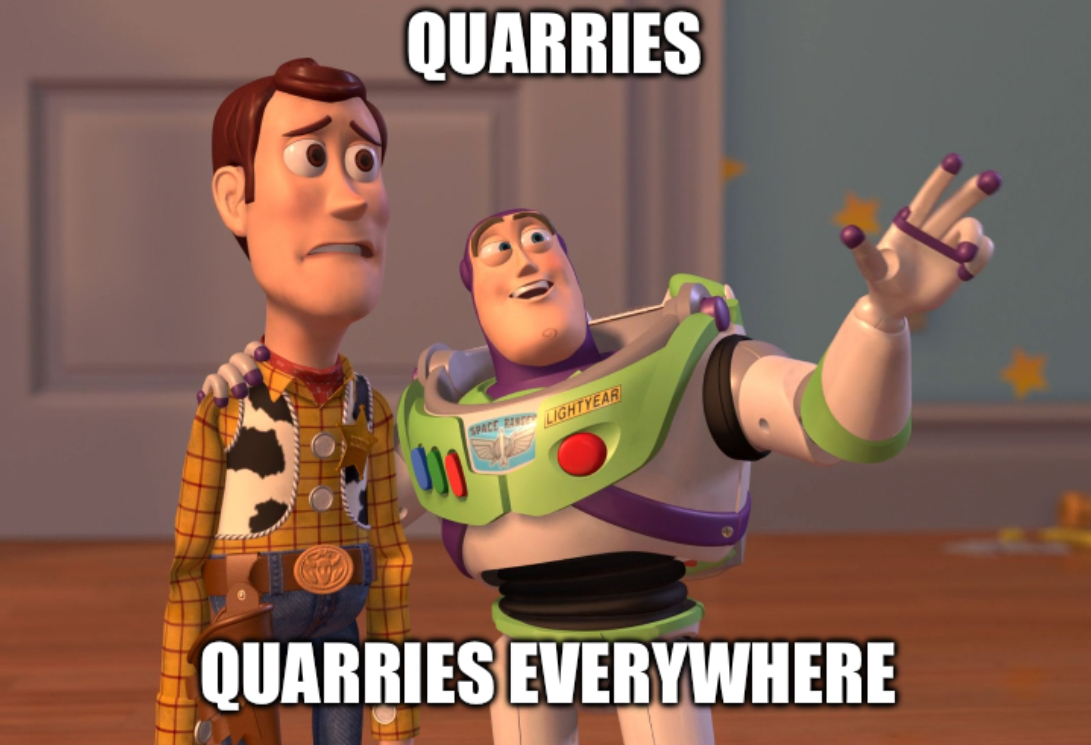Dude needs to learn how to read a map.
Topo maps are super complicated…
Definitely a quarry.


It’s a rice paddy.
Ah-ah, now hold on there. Not “dude” - one. One is far too sophisticated and intelligent to sully one’s filigreed tongue with such drab and pedestrian nomenclature as “dude”, as evidenced by the robust vocabulary on prominent display in this most considered - might one even posit, scholastic - query.
Obviously a quarry. How else could you explain the huge depth markers visible in the top photograph?
This is idiotic. It was clearly done by aliens.
Qarries are the same as trenches apparently. Sea floor spreading and layers of basalt rock and centuries of expansion… clearly that’s the conspiracy.
Apparently the deepest quarry is 1.2 km (1200m) while the deepest trench, the Mariana trench, is 200 km deep (200,000 m). Totally the same in scale /s
Imagine not grasping the concept of using averages to simplify visual information.
There’s a better theory about the Black Sea… it was once a freshwater lake that got flooded by the Mediterranean thousands of years ago.
That massive flood was the origin of the Noah and Gilgamesh stories.
https://en.m.wikipedia.org/wiki/Black_Sea_deluge_hypothesis
The guy who found the Titanic did underwater explorations and found the remains of the original coastline and human habitation 1,000 feet underwater:
The problem with the claim that it was the origin of the Noah and Gilgamesh stories are:
a) It happened thousands of years before
and
b) Civilizations tend to build around bodies of water. Bodies of water can flood, sometimes catastrophically.
You really don’t need more of an explanation for flood stories than “most ancient people lived near places that could flood.”
Doggerland was also flooded and there’s also lots of evidence of people before that flood.
The rising sea levels in lower Mesopotamia would have been visible on a human timescale. It’s not hard to get from “my grandfather lived in a house which is now 100m out to sea” to a mythology that a flood drowned the old world.
Again, catastrophic floods happen all the time. The theory suggests that the Black Sea flood happened in 5600 BCE. The earliest version of the Epic of Gilgamesh we have is from 2000 BCE and the king it was likely based upon lived in 2700 BCE.
Now what is more likely, that a big flood happened not all that close to Sumeria and people kept talking about it for thousands of years or they just lived on the Tigris, which floods all the time and that’s where the story came from?
If nothing else, Sumeria was nowhere near the Black Sea. It doesn’t even make sense geographically.
Yeah, pretty much this. People like living near water - you can drink it (if it’s fresh), you can use it for rudimentary sanitation, you can water animals and crops much easier than building complex irrigation, and you can use it as a food source (fish/shellfish).
And that’s exactly why, despite certain Christian biblical literalist beliefs, you can find flood myths all over the world.
https://en.wikipedia.org/wiki/List_of_flood_myths
If there were volcanoes everywhere humans settled, there would be global volcano myths.
But as you can see from that list, it’s pretty global. You can’t really say that about volcanoes. On the other hand, Chinese flood myths can be explained a lot more easily by the fact that a massive Yangtze flood in the 1930s killed something like 4 million people wasn’t even close to a one-off occurrence than the Black Sea flooding neolithic settlements.
On top of that, the Tigris floods pretty regularly even today and the Tigris was also home to the Sumerian civilization that the Gilgamesh story came from.
https://earthobservatory.nasa.gov/images/16072/floods-in-northern-iraq
I love that map showing Berlin, Amsterdam, and London more or less in a straight line!
I wish they would have explained it though. I can’t see an explanation. I imagine it has to do with the geography caused by the glaciers making the edge of where glaciers were (at least for London and Berlin) optimum places to found settlements.
Now I’m going to have to see if the same is true about North America.
Edit: Doesn’t seem to be-

Even if you go back centuries, Cahokia was north of the glacier line… well, the Kansan one anyway. It’s about right for the Wisconsin one.
Edit 2: That actually tracks because Wisconsin was the most recent. So there may be something to this.
In the Pacific Northwest it’s tricky because of the scouring from the Missoula floods.
Essentially there was an ice dam holding back all the melt water from the end of the ice age, and when that dam failed, it was like the entire Pacific Northwest flushed like a toilet. Then the dam would re-form and it would do it again and again.
https://en.m.wikipedia.org/wiki/Missoula_floods
“He estimated the water flow was 9 cubic miles per hour (38 km3/h), more than the combined flow of every river in the world.[8] More recent estimates place the flow rate at ten times the flow of all current rivers combined.[3]”
Coincidentally, I was reading about that maybe a week ago! It was mentioned on an archaeology show I was watching on YouTube (something by Minuminuteman, I think) and he briefly talked about it, so I looked it up. Absolutely fascinating. Something similar happened in the Straits of Gibraltar to form the Mediterranean, but long before modern humans.
https://en.wikipedia.org/wiki/Zanclean_flood
Edit: There was also the Bonneville Flood that was like the Missoula Floods, except it only happened once and was even more devastating.
The scale difference between the two is hilarious.
Notice they never said what the rock that was quarried was used for.
Because nothing comes to mind with the vast amount of rock that would have been removed for it to be an actual quarry that looked like that.
The shape shifting lizards used it for their asteroid ships
This make so much sense. Thanks you for bringing the clue we all missed
They used it for the pyramids, DUH
Maybe all the rock went to Ural?mud for the mudflood had to come from somewhere!
(if you’re not familiar with the new mudflood/tartaria conspiracy theories, they’re wild. people just keep inventing wacky new shit to theorize about.)
I just had the mental image of a scaled up front end loader about the size of Rhode Island pushing an ungodly amount of material around. So thanks for that
As unhinged as these people are, they’re a great source of worldbuilding ideas.
I’m near certain that’s satire.
I’unno, man, I’ve had people debate the validity of topographical maps because “mountains aren’t shelf-shaped”







